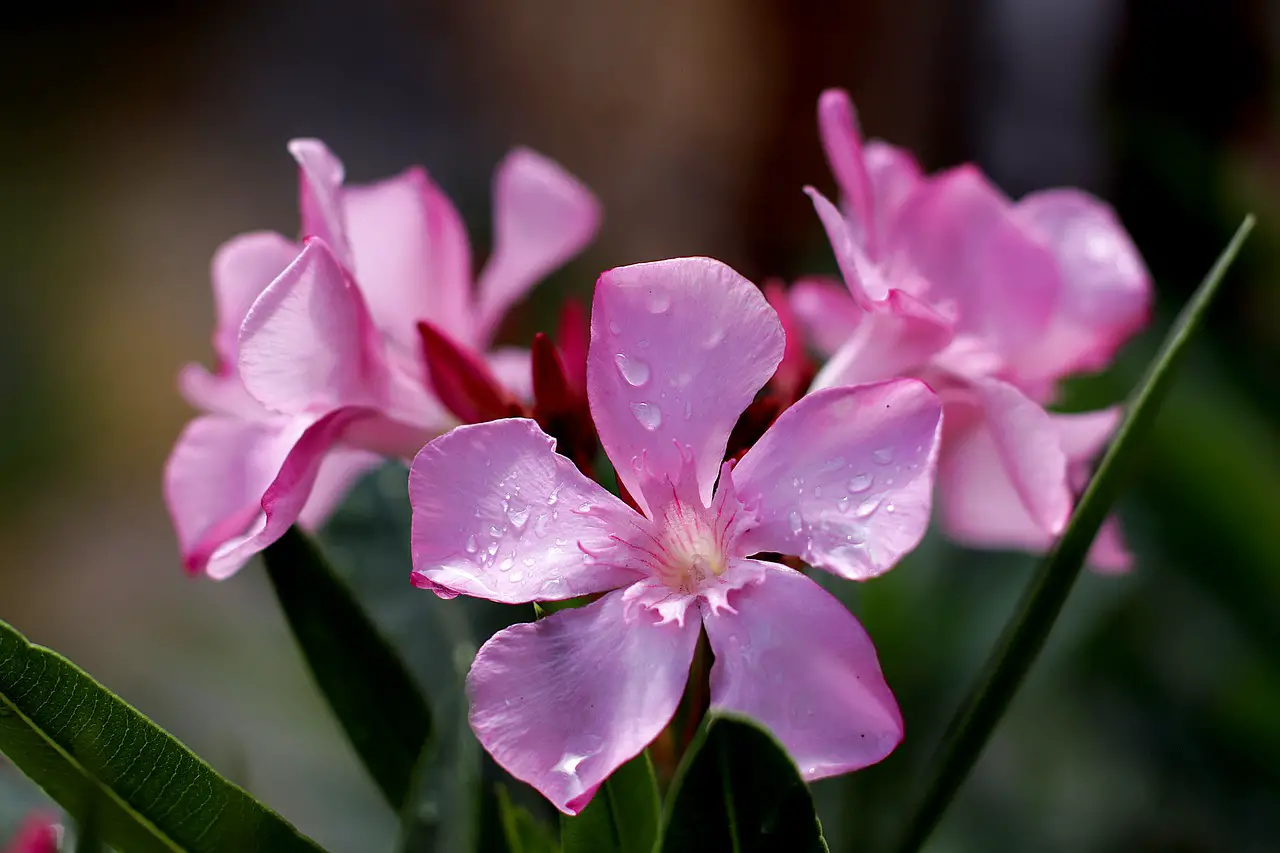Last Updated on June 29, 2022 by Real Men Sow
The mainstay of Mediterranean gardens is the Oleander. They are widely used as screen plants, along roadsides, and on hillsides. The large, open clusters of flowers, which bloom in summer, can be single or two-sided and come in many colors, including pink, red, and peach. The evergreen leaves are long and slender, and are a beautiful shade of silvery green.
How poisonous is oleander to humans?
The entire oleander plant can be extremely poisonous. Even a small amount can cause death. It is best to avoid growing oleanders near children or pets. Skin irritations may result from the foliage. After handling the foliage, wash your hands well and wear gloves.
How To Grow Oleander Plants
Nerium oleander (oleander) is a tender shrub which means they can only grow in areas where temperatures don’t drop below freezing. It can only be grown outside in the warmest parts of the UK.
Growing Oleander in Pots
Oleanders can be grown in pots in protected areas such as a porch, greenhouse, conservatory or porch. However, they are not suitable for centrally heated rooms. Oleanders can be outside during the summer months
What is the best month to plant oleander plants?
Plant oleander shrubs in spring and summer. Use a soil-based, compost-based, large-sized pot to plant the oleander bushes. Place in a bright spot away from central heating. Or, you can place them outdoors in a sunny spot in milder areas. Oleanders don’t like frost. Water your plants regularly during the summer and give them a good feed. Repot once a year or top-dress in spring.
Where To Grow Oleander
Good light is essential for oleanders to produce flowers. Indoors, put your oleander in a conservatory, porch, or cool room in bright light or outside in a sheltered spot that gets sun for all or most of the day.
How To Plant Oleander
Use a soil-based potting compound to plant oleander. To ensure drainage, add a third of perlite or coarse grit to the mixture. The pot should be placed where there is no risk of waterlogging. If the pot is to be used on paving, it should be elevated just above the ground.
How To Care For Oleander
Regular watering is essential for oleanders from spring through autumn in order to maintain a moist compost. It’s also important to ensure that they don’t run out of water in spring, when the buds are starting to form. Reduce the amount of water you give your plants during winter as growth slows down. From late spring through early autumn, feed your plants with a liquid fertilizer once every two weeks.
Moving Oleanders From Outdoors to Indoors
Although it is not necessary, pruning oleander bushes can be beneficial. It is especially important if the plant is being moved from outdoor to indoors in summer. Pruning should be done in the spring or late winter, but it is possible to prune in autumn. First, remove any damaged or dead growth. Next, thin out the crowded shoots. Reduce flowering shoots by half, and trim a few centimetres from the tips of un-flowered shoot tips to encourage bushy growth.
When To Repot Oleander Plants
Report oleanders every spring in large pots. Top-dress plants in large pots by gently scraping the top 3-5cm of compost off and replacing it with soil-based potting compost.
How To Propagate Oleander Plants
Cut the cuttings mid- to late summer. Take cuttings from leafy, non-flowering shoots about 10 cm in length. Use a sharp knife to slice just below the leaf joint. Place the base in hormone rooting powder. When roots are fully developed, cuttings can also grow easily in water. You can also grow oleanders from seeds. Take the ripe seeds in autumn and sow them immediately in moist compost.
Growing Oleander Plants: Problem Solving
Plants of oleander that are grown under cover are more susceptible to pests than plants grown outside. You should be vigilant and inspect your plants for pests like mealybug, scale insects, and spider mites. If there isn’t enough light, plants are more likely to resist flowering. Therefore, to get better chances of flowering, move to a sunny location.
The oleander drying out during flower formation can cause flower buds to fall before they open. Your oleander should have plenty of water throughout the growing season. The signs of too much water are yellowing leaves.
Growing Oleander: Buying Advice
- Oleanders can be toxic for pets and humans.
- Choose a plant that is healthy and free from any signs of damage or pests.
- You can find Oleanders at a variety of nurseries and garden centers, but specialist nurseries have more options.
Oleander Varieties To Grow
Although Oleander (Nerium oleander) comes in many varieties, they are often sold by their color and not their name. The most common varieties are white, red, and pink-flowered. Although most oleanders have silvery-green leaves, variegated varieties may also be available.
The size of the pot in which it is growing will limit its size. Pot sizes can vary greatly. Oleanders grown in pots can grow up to a meter tall and 60 cm wide. However, oleanders that are planted in soil outside or in a conservatory could reach 1.5-1.8m in height with a narrower spread.


